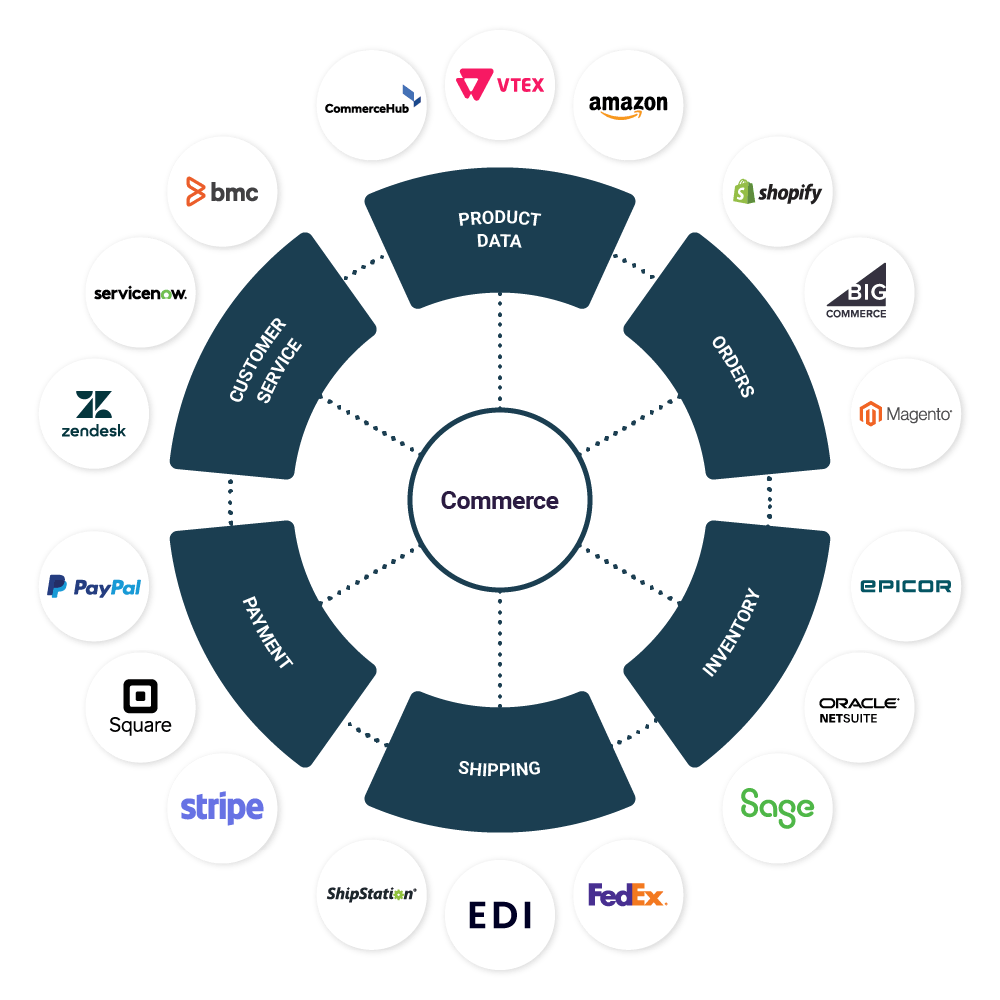Ecommerce Integration Platform
Jitterbit’s low-code integration platform connects both ecommerce and brick and mortar commerce apps, creating a seamless buying experience across retail channels and automating manual processes.

How Ecommerce Integration Transforms Businesses
“Everything is all connected with Jitterbit including our ecommerce selling channels, helping us to better manage inventory and sales. We are very happy with the outcome – it works perfectly – and we know we can always add solutions in the future which is great.”
– Romain Bénichou, CEO, Red Luxury
Use Case: Inventory Management
“Using Jitterbit, we went from weekly or bimonthly inventory updates to daily updates, which has been a game-changer. The improved accuracy gives us a better feel for our inventory, and our internal systems can more accurately record how Amazon is performing.”
– Jason Ekinaka, Operations Manager at Olukai
Use Case: Lead to Order and Fulfillment
Supercharge transactions with Jitterbit’s Commerce Integration Solutions
With Jitterbit’s low-code integration platform, businesses can connect commerce applications, sales channels, and EDI to accounting systems, ERP systems, CRM, and 3PL, to gain a complete view of the entire buying journey. Automate order-to-fulfillment processes and aggregate data from multiple touchpoints to drive innovation, eliminate manual processes, and create a consistent buying journey every time.
Discover how Jitterbit’s ecommerce integration platform can transform your business by experiencing it firsthand—request a product demo to see how it works and get answers to your specific business questions.
Ecommerce Integration Platform Use Cases
Integrate systems to automate workflows throughout the entire commerce journey—order, packing, inventory, shipping, returns, and more. Establish a single source of truth for commerce activities across teams and departments with one unified ecommerce integration solution.



Lead to Order
Create a frictionless, integrated commerce experience from browse to shop to buy by connecting your with your ERP system.
- Stop processing orders manually by syncing customer data.
- Measure profitability in real time by automating inventory counts when purchases are made.
- Get teams on the same page by integrating sales and finance applications in one place.
Pre-Built Commerce Integrations that Accelerate Workflows
Jitterbit's reusable and customizable connectors let you quickly link applications, databases, and protocols with just a few clicks, cutting down ecommerce platform integration deployment time by 50 to 80 percent.

See all of our application connectors here.
View ConnectorsRelated Resources

Improve the Customer Experience and Increase Efficiency in Commerce with iPaaS

Commerce Automation Tips: Eliminate Manual Roadblocks in Your Order to Fulfillment Process

SAP + VTEX Integration White Paper: Decreasing Ecommerce Time to Revenue with iPaaS

Retail & Ecommerce Solution Sheet
